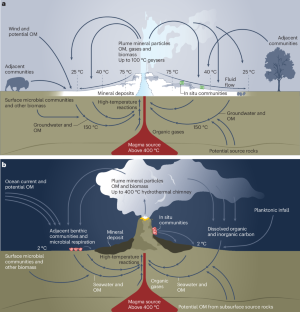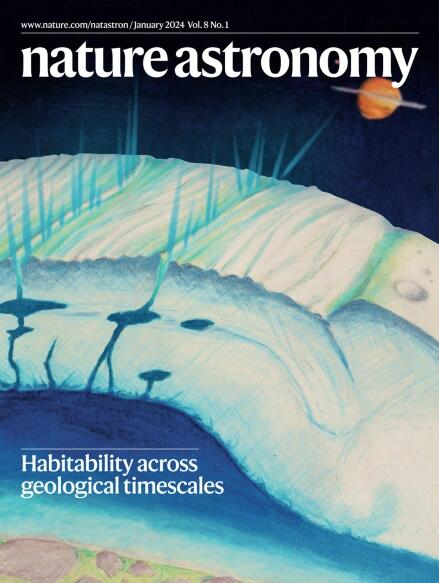Geochemical context for hydrothermal organic molecules in Mars-analogue samples from Earth
IF 12.9
1区 物理与天体物理
Q1 ASTRONOMY & ASTROPHYSICS
引用次数: 0
Abstract
Hydrothermal environments—where chemical interactions between heated water and rock take place—are of great interest for astrobiology as they may create habitable environments and preserve signs of life. Several planetary bodies display evidence of hydrothermalism, including Mars, which has possessed various hydrothermal environments that could alter organic signals, complicating assessments of biogenicity and our understanding of the depositional environment and subsequent alteration processes. Organic molecules from Earth-based hydrothermal systems serve as an analogue for what we might find on Mars and are typically made up of complex mixtures of in situ and transported molecules that have been altered by diverse mechanisms. Improving our understanding of the processes that drive the preservation and circulation of organic molecules in Earth-based hydrothermal settings is crucial, as the sources and fates of these molecules in marine hydrothermal environments are different from those in subaerial (land-based) hydrothermal environments, even if many of the processes that govern the transport and alteration of this organic matter seem to be similar. To understand the origin of organic molecules found in samples from another world, we must critically evaluate the processes that alter these molecules in terrestrial hydrothermal samples. Hydrothermal environments are sites of high astrobiological importance. Examining the behaviour of organic molecules in hydrothermal analogues from Earth could help in interpreting observations of hydrothermal settings on other planetary bodies, especially Mars.


地球上类似火星样品中热液有机分子的地球化学背景
热液环境——热水和岩石发生化学反应的地方——是天体生物学非常感兴趣的地方,因为它们可能创造适宜居住的环境并保存生命的迹象。包括火星在内的几个行星体显示了热液作用的证据,火星拥有各种热液环境,可以改变有机信号,使生物源性评估和我们对沉积环境和随后的蚀变过程的理解复杂化。来自地球热液系统的有机分子与我们可能在火星上发现的有机分子类似,通常由原位和运输分子的复杂混合物组成,这些分子经过多种机制的改变。提高我们对地球热液环境中驱动有机分子保存和循环的过程的理解是至关重要的,因为海洋热液环境中这些分子的来源和命运不同于地面(陆地)热液环境,即使控制这些有机物的运输和改变的许多过程似乎是相似的。为了了解从另一个世界的样品中发现的有机分子的起源,我们必须批判性地评估在陆地热液样品中改变这些分子的过程。
本文章由计算机程序翻译,如有差异,请以英文原文为准。
求助全文
约1分钟内获得全文
求助全文
来源期刊

Nature Astronomy
Physics and Astronomy-Astronomy and Astrophysics
CiteScore
19.50
自引率
2.80%
发文量
252
期刊介绍:
Nature Astronomy, the oldest science, has played a significant role in the history of Nature. Throughout the years, pioneering discoveries such as the first quasar, exoplanet, and understanding of spiral nebulae have been reported in the journal. With the introduction of Nature Astronomy, the field now receives expanded coverage, welcoming research in astronomy, astrophysics, and planetary science. The primary objective is to encourage closer collaboration among researchers in these related areas.
Similar to other journals under the Nature brand, Nature Astronomy boasts a devoted team of professional editors, ensuring fairness and rigorous peer-review processes. The journal maintains high standards in copy-editing and production, ensuring timely publication and editorial independence.
In addition to original research, Nature Astronomy publishes a wide range of content, including Comments, Reviews, News and Views, Features, and Correspondence. This diverse collection covers various disciplines within astronomy and includes contributions from a diverse range of voices.
 求助内容:
求助内容: 应助结果提醒方式:
应助结果提醒方式:


